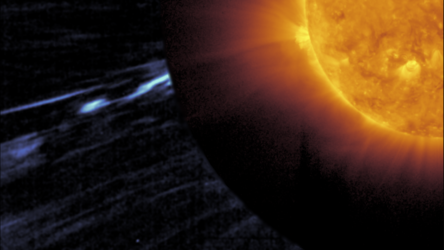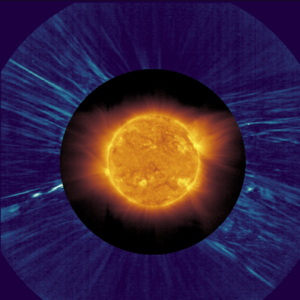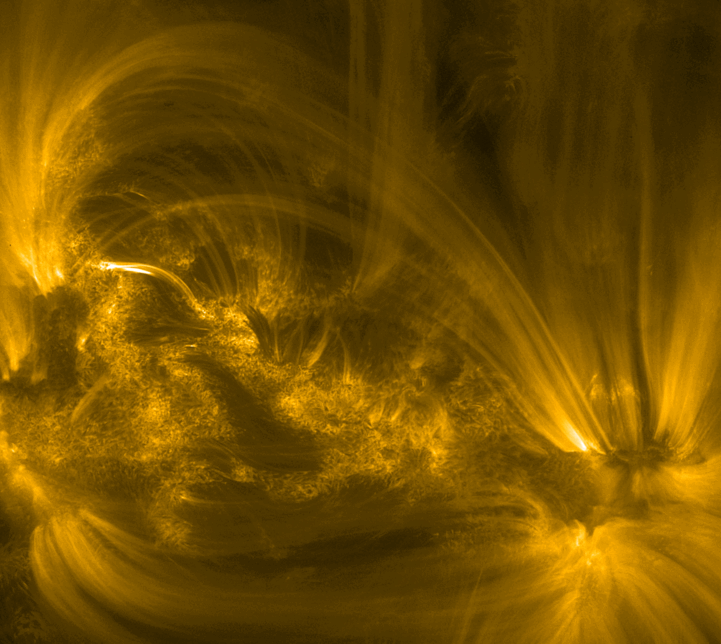Accept all cookies Accept only essential cookies See our Cookie Notice

About ESA
The European Space Agency (ESA) is Europe’s gateway to space. Its mission is to shape the development of Europe’s space capability and ensure that investment in space continues to deliver benefits to the citizens of Europe and the world.
Highlights
ESA - United space in Europe
This is ESA ESA facts Member States & Cooperating States Funding Director General Top management For Member State Delegations European vision European Space Policy ESA & EU Space Councils Responsibility & Sustainability Annual Report Calendar of meetings Corporate newsEstablishments & sites
ESA Headquarters ESA ESTEC ESA ESOC ESA ESRIN ESA EAC ESA ESAC Europe's Spaceport ESA ESEC ESA ECSAT Brussels Office Washington OfficeWorking with ESA
Business with ESA ESA Commercialisation Gateway Law at ESA Careers Cyber resilience at ESA IT at ESA Newsroom Partnerships Merchandising Licence Education Open Space Innovation Platform Integrity and Reporting Administrative Tribunal Health and SafetyMore about ESA
History ESA Historical Archives Exhibitions Publications Art & Culture ESA Merchandise Kids Diversity ESA Brand Centre ESA ChampionsLatest
Space in Member States
Find out more about space activities in our 23 Member States, and understand how ESA works together with their national agencies, institutions and organisations.
Science & Exploration
Exploring our Solar System and unlocking the secrets of the Universe
Go to topicAstronauts
Missions
Juice Euclid Webb Solar Orbiter BepiColombo Gaia ExoMars Cheops Exoplanet missions More missionsActivities
International Space Station Orion service module Gateway Concordia Caves & Pangaea BenefitsLatest
Space Safety
Protecting life and infrastructure on Earth and in orbit
Go to topicAsteroids
Asteroids and Planetary Defence Asteroid danger explained Flyeye telescope: asteroid detection Hera mission: asteroid deflection Near-Earth Object Coordination CentreSpace junk
About space debris Space debris by the numbers Space Environment Report In space refuelling, refurbishing and removingSafety from space
Clean Space ecodesign Zero Debris Technologies Space for Earth Supporting Sustainable DevelopmentLatest
Applications
Using space to benefit citizens and meet future challenges on Earth
Go to topicObserving the Earth
Observing the Earth Future EO Copernicus Meteorology Space for our climate Satellite missionsCommercialisation
ESA Commercialisation Gateway Open Space Innovation Platform Business Incubation ESA Space SolutionsLatest
Enabling & Support
Making space accessible and developing the technologies for the future
Go to topicBuilding missions
Space Engineering and Technology Test centre Laboratories Concurrent Design Facility Preparing for the future Shaping the Future Discovery and Preparation Advanced Concepts TeamSpace transportation
Space Transportation Ariane Vega Space Rider Future space transportation Boost! Europe's Spaceport Launches from Europe's Spaceport from 2012Latest


Sun's surprising activity surge in Solar Orbiter snapshot
Thank you for liking
You have already liked this page, you can only like it once!
See how the Sun changed between February 2021 and October 2023. As the Sun approaches the maximum in its magnetic activity cycle, we see more brilliant explosions, dark sunspots, loops of plasma, and swirls of super-hot gas.
The Sun goes through a cycle of activity that lasts around 11 years. It is caused by the ‘solar dynamo’, the process that generates the Sun’s magnetic field. At the beginning of this cycle (the solar minimum) there is relatively little activity and few sunspots. Activity steadily increases until it peaks (the solar maximum) and then decreases again to a minimum.
The most recent solar minimum was in December 2019, just two months before Solar Orbiter launched. The spacecraft’s early views (left) showed that in February 2021 the Sun was still relatively calm.
We are now approaching solar maximum, which is expected to occur in 2025. Solar Orbiter’s more recent views, taken during a close approach to the Sun in October 2023 (right), show a striking increase in solar activity. This adds weight to recent theories [paper 1, paper 2] that the maximum could arrive up to a year earlier than expected.
Solar Orbiter will help us predict the timing and strength of solar cycles. Although notoriously tricky, this is vital because solar activity can seriously affect life on Earth; extreme eruptions can damage ground-based electricity grids and disable orbiting satellites.
The images were taken by Solar Orbiter’s Extreme Ultraviolet Imager (EUI) instrument. They reveal the Sun’s upper atmosphere, which has a temperature of around a million degrees Celsius. EUI helps scientists investigate the mysterious heating processes that occur in the Sun’s outer regions. Since EUI views the Sun in ultraviolet light, which is invisible to human eyes, the yellow colour is added to help us visualise our changing Sun.
Solar Orbiter is a space mission of international collaboration between ESA and NASA, operated by ESA. The Extreme Ultraviolet Imager (EUI) instrument is led by the Royal Observatory of Belgium.
-
CREDIT
ESA & NASA/Solar Orbiter/EUI Team -
LICENCE
ESA Standard Licence

Zooming in on a solar switchback

Solar Orbiter’s unprecedented view of the quiet corona

Capturing a solar switchback

Magnetic activity















 Germany
Germany
 Austria
Austria
 Belgium
Belgium
 Denmark
Denmark
 Spain
Spain
 Estonia
Estonia
 Finland
Finland
 France
France
 Greece
Greece
 Hungary
Hungary
 Ireland
Ireland
 Italy
Italy
 Luxembourg
Luxembourg
 Norway
Norway
 The Netherlands
The Netherlands
 Poland
Poland
 Portugal
Portugal
 Czechia
Czechia
 Romania
Romania
 United Kingdom
United Kingdom
 Slovenia
Slovenia
 Sweden
Sweden
 Switzerland
Switzerland

























